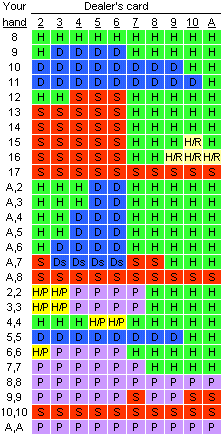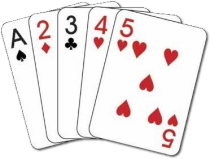Stud Hi Lo
The most important trait of the winning stud eight player is selective aggression. Well, I guess that’s two traits, but if you can be aggressive and patient, you can win in stud hi/lo. Losing players will see far too many fourth streets. Seven Card Stud Hi/Lo is also known as a split-pot game as the pot is divided into two pools, half for the winner of the 'high' hand and the other half for the winner of the 'low' hand. The high hand uses the regular high hand ranking system, where the low hand uses the 'ace to five' system for ranking its hands. Stud Indicator supports Limit and NL/PL Stud Hi, Hi/Lo, and RAZZ games. Displays accurate winning poker odds for your own hand and for each of your opponents. Easy to use Head-Up Display (HUD). Tracks player stats and categorizes playing styles (Loose/Tight, Steal%, Aggressive/Passive, Solid/Overplay).
7 Card Stud is often referred to as a game that helped bring about the existence of Texas Hold’em and other popular poker variants, and for good reason too. Prior to Hold’em, Stud was the game of choice not only in the US, but in most regions of the world.
The following few sections will elaborate upon all the rules of this game. First and foremost, it must be mentioned that Stud Hi Lo is played with anywhere from 2 to 8 players. The game itself is broken down into different parts, and all of them will be explained in full below.
The Setup
Stud Hi Low Rules

Before any play can begin, three different financial transactions must occur. First comes the big bet, next comes the small bet, and, finally, whoever is not placing one of the two aforementioned bets will be forced to ante. Most often, the small bet is half the size of the big bet and ante’s are 10% of the big bet’s nominal value.

7 Card Stud Background Information
Before delving further into the actual gameplay of Stud, it is important that we discuss the different rules tied to different variations of the game. Being that there exists Fixed, Spread, and Pot Limit varieties of Stud, each with their own rules, it is imperative that you take this information to heart and really take the time to understand and comprehend it. After all, Stud is often referred to as one of the most demanding casino games with regard to how much skill is required on the part of individual players.
Fixed Limit Stud is a version of the game where the big and small bets are set, fixed amounts (hence the name). If you are playing a $1/$2 Fixed Limit Stud game, the small bet would be $1 while the big bet would be double that amount, or $2. The fixed aspect of this game relates to more than just the initial big and small bets too. During the initial round of betting, the amount a person can wager can never exceed the amount of the small bet. In all subsequent rounds, bets and raises must equal the amount of the initial big bet. The final rule for Fixed Limit Stud is that the amount of times players can raised in a single round is capped, most often at 3.

Spread Limit Stud is a more confusing and infrequently utilized variation of the game. The rules are not set in stone and can vary from casino to casino, so we will only discuss the rules generally and not so matter-of-factly. In most scenarios, the big and small bets are set in much the same way that they are in Fixed Limit Stud. Unlike Fixed Limit Stud, however, there is often no cap on the number of times players can raise during one, single round. Most often, the amount a person can wager must fall between the nominal value of the big and small bets. Finally, antes are not always mandated in Spread Limit Stud games, but when they do exist they are often 25% (or more) of the big bet’s value.
Finally, there exists Pot Limit Stud. For most, the Pot Limit version of this game is reserved for players who are looking to play with a lot of money. With Pot Limit Stud, the size of things like antes is something that is determined by the amount of money which it costs to buy-in to a singular game. The minimum bring (you will learn more about that below) is often the same amount as the ante. Finally, the maximum amount of money a single player can bet is equal to the amount of the current pot as well as any bets that have already been laid down. This last fact is why higher stakes players tend to love Pot Limit Stud.
The Bring
After all initial bets and antes are made, the round’s dealer will hand out 2 face-down cards and 1 face-up card to every player around the table. The game’s action is begun by the person who was dealt the lowest-valued face-up card. The ranking of low cards is in order from 2 to Ace in ascending order. If two players are dealt 2s, for example, the low card will be determined by the two cards’ suits. In ascending order, the ranking of suits is clubs, diamonds, hearts, and spades.
After the person with the lowest card has been sorted, that player can decide whether their hand is worth the small bet amount. If it is, they will match that bet and the first round of betting will ensue.
When betting commences, it is begun with the player seated to the bring’s left. As it is in most other card games, players individually have the option to either fold, call, or raise when it is their turn to wager. By calling, all a player is doing is matching the bring. So if the bring simply matched the ante, that is what the first bettor will have to do. If the bring matched the small bet, however, the first person calling will have to match that, larger amount. A raise can occur during the first round of betting, but only so long as the bring matched the small bet and did not merely match the ante.

After the first round of betting every player is dealt yet another face-up card. Now that there are 2 face-up cards in front of every active player, the first person to act will be the player with the best 2 face-up cards. The value of the hands is as it is in any other poker form, with Aces and Kings being the best cards while 2s and 3s are the worst or weakest.
After the person who is to act has been established, that player can either check or make a wager equivalent to the value of the small bet. Any raises that happen after an initial bet is made (if an initial bet is made) can only be in terms of the small bet.
Limit Stud Hi Lo Starting Hands
The next betting round is exactly the same as the one previous to it. The only difference is that now bets and raises must be made in terms of the initial big bet. The fourth betting round mirrors the third and the final betting round does too.
The Showdown
Once all betting has been finished, players must take their 7 cards and assemble the best possible 5-card hand. The winning hand in a game of 7 Card Stud is determined in the same exact way as it is with Hold’em in that the strongest hand will take away the pot.
With 7 Card Stud Hi Lo, a crucial difference occurs at the showdown. Because this is technically a split-pot game, there are two winners determined when all is said and done. The high hand, naturally, is the best combination of 5 cards a player has.
The low hand, however, must meet certain qualifications and, in many ways, is entirely different from a high hand. The main rules for determining the low hand are as follows:

- The low hand has nothing to do with a player’s 5-card high hand. In determining a low hand, a player can select any 5 of the 7 cards that they were dealt.
- Low hands are qualifying if they consist of 5 unpaired cards with values no higher than 8
- Aces are considered low for low hands
- Things like straights and flushes do not impact the determination of a low hand
- A low hand is only as good as its highest card
- For example, a hand consisting of A, 3, 4, 5, 8 would lose to a hand consisting of 3, 4, 5, 6, 7